The Inaugural Kearsarge Klassic
Will I ever get used to this, I wonder? These special rides, with their remote starts, carpools and road trips. I am easily excitable, and the anticipation is just too much. Once again I failed to get enough sleep the night before. The alarm clock rang at 4:30am and I went through the motions on autopilot: Shower, dress, make and drink coffee. Drag the bike outside. Gather my things and put them next to the bike. At 5:15am the van arrived and we were off. I buckled up in the back seat to keep myself from bouncing. We were becoming known as the Somerville Trio: Brian, Somervillain and myself. That morning we headed to New Hampshire, to ride the inaugural Kearsarge Klassic - a dirt road randonnee to benefit the Ausbon Sargent Land Preservation Trust. We learned of the ride just a short while earlier. "It will be like a rough, low-key version of the D2R2," somebody said. I signed up. Then I remembered that I didn't have a suitable bike.
But I did have some generous friends who offered to lend me their fat-tire rides, for which I was immensely grateful. After considering my options, I borrowed the Honey cyclocross bike that I wrote about earlier. It fit me well without having to make major adjustments and I was already familiar with the handling. On the downside, the bike was geared somewhat high - good for cyclocross racing, but not for long rides with sustained climbing. I decided that a comfortable fit was more important than low gears, and accepted that I'd probably be doing some walking on this ride. I used my own saddle and attached a saddlebag.
We arrived in New Hampshire just as it grew light outside. A thick fog hung over the farmlands and showed no promise of lifting. The forecast warned of "severe weather." We hoped for the best.
The event start was at the New London Historical Society - a small village preserved to reflect the life of rural 19th century New England. Registration was in a large unpainted barn. It was quiet. A cyclist here, a cyclist there. Three routes had been offered, and we were signed up for the Mid Circuit: 60 miles with 80% dirt and close to 5,000 feet of climbing.
But I did have some generous friends who offered to lend me their fat-tire rides, for which I was immensely grateful. After considering my options, I borrowed the Honey cyclocross bike that I wrote about earlier. It fit me well without having to make major adjustments and I was already familiar with the handling. On the downside, the bike was geared somewhat high - good for cyclocross racing, but not for long rides with sustained climbing. I decided that a comfortable fit was more important than low gears, and accepted that I'd probably be doing some walking on this ride. I used my own saddle and attached a saddlebag.
We arrived in New Hampshire just as it grew light outside. A thick fog hung over the farmlands and showed no promise of lifting. The forecast warned of "severe weather." We hoped for the best.
The event start was at the New London Historical Society - a small village preserved to reflect the life of rural 19th century New England. Registration was in a large unpainted barn. It was quiet. A cyclist here, a cyclist there. Three routes had been offered, and we were signed up for the Mid Circuit: 60 miles with 80% dirt and close to 5,000 feet of climbing.
The majority of the bikes present were of the racy variety. The only classic and vintage bikes were from the handful of cyclists I already knew from back home.
Somervillain brought his Shogunneur, which he typically rides on dirt.
Brian brought his pink Bianchi 650B conversion, which I really must photograph and feature here soon.
Cyclists doing the longer route had an earlier start and were taking off as we arrived. I managed to snap a picture of the Blayleys riding away on their tandem. I was sure that I'd see them again at lunch or dinner, but in fact I did not - The way the timing worked out, participants would not see much of each other in the course of the day.
I changed into cycling shoes and secured the cue sheet to my handlebars (I will have to explain my cue sheet attachment methods in a separate post, since I know you are all dying to emulate the elegant look). The morning air was chilly, but there was also a humidity to it that suggested a hot day ahead. I wore a short sleeve wool jersey with arm warmers and stashed a rain jacket in my bag. I also had with me some food, bandaids, tools, a spare tube, sunscreen, chamois cream, insect repellent, money and of course the camera.
Somervillain brought his Shogunneur, which he typically rides on dirt.
Brian brought his pink Bianchi 650B conversion, which I really must photograph and feature here soon.
As far as handmade stuff, there was Igleheart and IF and Seven and a team on Sketchies, as well as my borrowed Honey.
But the majority were big-name racey bikes, as well as lots of Salsas and a few Somas. I saw only a couple of mountain bikes. The weapons of choice for most participants seemed to be cyclocross bikes with knobby tires or fat slicks.
Overall, participants looked serious. Lots of team kits. Circling on the grass to warm up. Not too much socialising.
Cyclists doing the longer route had an earlier start and were taking off as we arrived. I managed to snap a picture of the Blayleys riding away on their tandem. I was sure that I'd see them again at lunch or dinner, but in fact I did not - The way the timing worked out, participants would not see much of each other in the course of the day.
I changed into cycling shoes and secured the cue sheet to my handlebars (I will have to explain my cue sheet attachment methods in a separate post, since I know you are all dying to emulate the elegant look). The morning air was chilly, but there was also a humidity to it that suggested a hot day ahead. I wore a short sleeve wool jersey with arm warmers and stashed a rain jacket in my bag. I also had with me some food, bandaids, tools, a spare tube, sunscreen, chamois cream, insect repellent, money and of course the camera.
We set out just before 8am and our first destination was a rural convenience store, where we hoped to find some coffee and hot breakfast. The mission was a success and, making ourselves comfortable on the side of the road, we consumed our purchases. Just then we encountered Matt Roy and David Wilcox - of MM Racing and the RSC endurance team - who were about to get some food and begin as well. It was at this point that reality hit me ("These are like, really strong cyclists! What the heck am I doing here?"). But rather than dwell on it, I enjoyed my breakfast sandwich. And then we set off.
The first, paved, climb began almost immediately. And almost immediately I was cursing the bike's knobby tires and my genius idea to do this ride with a full saddlebag. As I struggled to keep up, the tires made that whoosh-whoosh-whoosh sound that wide knobbies make on pavement, as if to mock me. And then, just as I felt relief upon cresting the hill, came the steep descent. We were not even on dirt yet, but already I began to understand what this place had in store for me. And that's when I finally started to feel just a little bit nervous. As I barreled downhill toward a stop sign before a large intersection, I also recalled that my braking power on this bike was, shall we say, suboptimal. And just then the cue sheet instructed us to turn left, onto a blissfully traffic-free dirt road.
It is hard to describe the pleasure of riding for miles and miles and miles without seeing pavement. I did not really fathom what this was like until the D2R2 and the Kearsarge Klassic. I couldn't have, as we simply have nothing like this back home. Where I live on the outskirts of Boston, you have to cycle for 10-20 miles just to get to a 3-6 mile stretch of dirt - usually a trail that will be either too tame or too technical to be truly enjoyable. But here in New Hampshire, these were actual roads we were riding on that just happened to be unpaved - an entire network of roads. Winding, hilly, forested, deliciously remote. Dirt roads.It seems like a simple enough concept, but only through experience was I truly able to grasp it. All through the ride I was thinking "This is so good, so good!" I did not want it to end.
The first 8 or so miles of the ride passed serenely as we warmed up on some rolling hills and absorbed the novelty of the scenery. This was about the time I usually start to feel energetic, and with this energy I attacked the next climb, enjoying the slippedy-slidey feel of the tires on dirt.
The texture of the roads varied throughout the route. Some roads were smoothly packed dirt. Others were covered with what cannot even be called gravel I don't think, but more like very large loose rocks. None of my pictures really capture this particular texture, but I am sure there is a term for it; others on the ride were talking about how rough it was. This put a damper on my fun at around mile 9, when we were faced with a steep descent on a road with this loose rocky texture. As soon as I started descending this stretch, I nearly peed in my pants from the suddenness with which the bike picked up speed while simultaneously threatening to fishtail out of control. Large stones were flying all over the place, with the bike both slicing through them and skipping off of them as I tried desperately to steer it along the winding road. I think I went into shock, so beyond my ability was this descent. When we reached a flatter section, I stopped and asked my riding partners to go on ahead of me. "Go ahead, I'll catch up to you at lunch. I'm going to be stopping to take photos." While it's true that I wanted to ride on my own for a bit and photograph the scenery, my more immediate concern at that moment was not crashing into them. If I was not confident I could control the bike, it was irresponsible to ride with others, I reasoned.
Now alone, I contemplated the descent ahead. Just then, my friend Jim and a couple of his buddies rode past, astride their shiny Sketchy bikes. They must have had a good laugh at the sight of me standing there, shell shocked from the previous descent and staring wild-eyed at the next one. "You'll be fine!" yelled Jim, and then added something about brakes. Either to use them or not to use them, or to use them in a specific way - I could not hear. I stood there for a few more minutes, until finally I just got tired of it. "Oh #@^% it," I thought, pointed the bike downhill and pushed on the pedals. My attitude at this point can best be described as "surrender." And maybe because of that, I relaxed and suddenly the bike felt as if it was not only riding itself, but teaching me how to hold my body upon it so as not to interfere with it riding itself. By the end of this, I developed an intuitive feel for how to counteract the fishtailing and how to steer around bends. It was an experience that somehow felt both calm and euphoric simultaneously. And before I knew it, it was over.
The dirt smoothed out and the long hills gave way to rollers. I followed the cue sheet along dirt road after dirt road. And then I began the killer of a climb to the first rest stop. Appropriately called Burnt Hill Road, this one mile stretch was so steep, that when I finally could not push the gears anymore and got off to walk the last bit, even the walking was tough. At the top, a meadow awaited with a picturesque view of the mountains which I forgot to photograph in the midst of talking to the rest stop volunteer. To my embarrassment, he informed me that I was the last one of the Mid Circuit group to be coming through the rest stop. I had no idea that anyone was keeping track! The description of the ride listed the times during which the stops would be open, and I was well within the limit. For me this ride was really just a photo expedition with some challenging terrain thrown in, but now I realised that more riders than not were treating it as a race. I decided to minimise my photo-stops from now on and cycle straight to lunch - which I did, albeit with a brief detour due to misunderstanding the cue sheet.
When I found the lunch stop along the main road, it was the same deal as the rest stop. It was early, but nonetheless I was last and they had already packed up. I guess I expected something similar to the D2R2, with everyone hanging out for hours before moving on. It certainly could have been like that, as we had loads of time before the event cutoff and only 20 miles to go for the Mid Circuit. I guess the timing of the various riders passing through was not in sync. But my friends were there waiting for me, and we moved on almost as soon as I arrived to cycle the last segment of the route together.
After lunch there was initially a deceptive feeling that the rest of the ride would be easy. After all, we had less than 20 miles to go. Neither of us was feeling tired after the 40 miles of the ride we'd done thus far. We enjoyed the dirt roads and discussed the scenery. New Hampshire's rural areas are noticeably different from Vermont's - less manicured, rougher, spookier. I liked that very much about this ride.
Though the day had gotten quite hot earlier, now there was a breeze and the skies were overcast - suggesting that perhaps we ought to take that "extreme weather" forecast seriously. We were doing well as far as speed until we came upon this... never-ending wall of a hill. This picture does not do it justice, since I could not possible photograph the worst of it while continuing to cycle, nor could I capture the endlessness of it. It just... kept going, at pretty much the same steep grade throughout, for several miles. I mashed for as long as I could, but did get off the bike a couple of times, unable sustain it for quite that long. Still, I made it. And upon reaching the top, we saw the indefatigable Jon Doyle and friends, on their way to the finish at the end of the longer route. We rode with them for a total of maybe 5 minutes before getting dropped on the final stretch of crazy rock-strewn descents.
Full picture set from the event here. Also check out Somervillain's pictures here.
Though the day had gotten quite hot earlier, now there was a breeze and the skies were overcast - suggesting that perhaps we ought to take that "extreme weather" forecast seriously. We were doing well as far as speed until we came upon this... never-ending wall of a hill. This picture does not do it justice, since I could not possible photograph the worst of it while continuing to cycle, nor could I capture the endlessness of it. It just... kept going, at pretty much the same steep grade throughout, for several miles. I mashed for as long as I could, but did get off the bike a couple of times, unable sustain it for quite that long. Still, I made it. And upon reaching the top, we saw the indefatigable Jon Doyle and friends, on their way to the finish at the end of the longer route. We rode with them for a total of maybe 5 minutes before getting dropped on the final stretch of crazy rock-strewn descents.
This series of descents was actually worse than what I had scared me so much at the beginning of the ride, but now I took it more calmly. In addition to the chunky loose rocks, there were washboards here - ridges over which the bike will skip wildly as the rider holds on for dear life. I got through it all, and in closer proximity to other riders this time. I felt the danger and the need to be careful, but no longer the fear. My hands did begin to hurt toward the end from modulating the brakes, but that was the extent of the damage I suffered on this ride.
The rain held off for as long as it could, but finally came down in the very final stretch - and when it did, it did not hold back. Thankfully, by this time we were just a few miles away and completing the final paved climb toward the finish. I got off the bike to turn on my tail light and put on my rain jacket, walked the bike a bit to rest my legs, then got back on and continued to mash, bathing in cool rainwater. I rolled up to the finish euphoric and delirious - along with Brian who stayed by my side through the last rainy mashy stretch. Somervillain was under the barn's awning, off his bike and ready to snap pictures: Exhibit A and Exhibit B. There is also an "epic" shot of all three of us, resembling happy wet mice.
At the finish, the nice volunteers served five different kinds of chili and corn bread, which we gladly sampled.
After changing into dry clothes, we took silly pictures of each other and loaded up the bikes back onto the van.We did not see many other cyclists at dinner - everyone more or less started and finished on their own timeline, had a quick dinner and left. Other cyclists were still en route and would do the same once they finished. We were a little surprised that there was not more of a social scene at the finish, but ultimately it didn't matter. The ride was fantastic.
Speaking as someone relatively new to riding on dirt roads, some parts of the Kearsarge Klassic were well outside of my comfort zone. A couple of the descents were downright terrifying and overcoming that was the biggest challenge. Despite my lack of low gears, I did not mind the climbing and only had to walk a few stretches. My legs didn't feel great after all the mashing, but two days later they seem fully recovered, so all is good. I experienced no pain during or after the ride, and very little tiredness. I am grateful to have managed to complete the Mid-Circuit course without crashes or mishaps, and in the fine company of Brian and Somervillain.
As far as bikes, I know that I've got to stop borrowing them to do these rides. So I am working on getting one of my own. Intuitive handling, wide tires and low gears is really what I'm after and there are some excellent stock options out there nowadays.
The Kearsarge Klassic is an event I would love to see develop over the years. The route was outstanding, the volunteers were wonderful, the area felt genuinely welcoming to cyclists. In comparison to the D2R2, this was a smaller and quieter event, with not so much of a festival atmosphere around it. The area is more remote, and the feel of the landscape is overall quite different. I feel very lucky indeed to have taken part in both events this summer. Many thanks to the New Hampshire Cycling Club and the Ausbon Sargent Land Preservation Trust for putting together the Kearsarge Klassic and inviting us to explore your beautiful dirt roads.
Full picture set from the event here. Also check out Somervillain's pictures here.

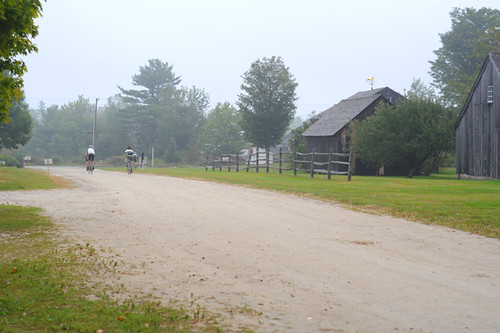
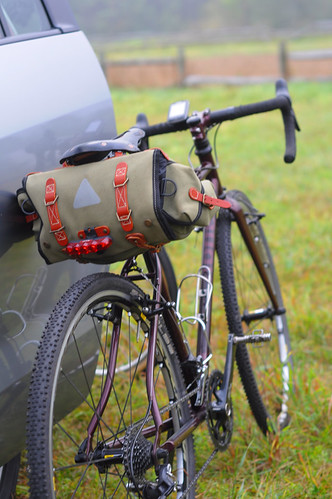
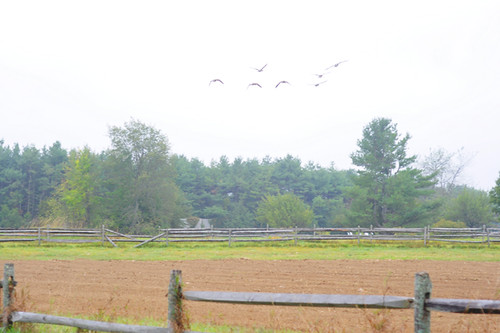
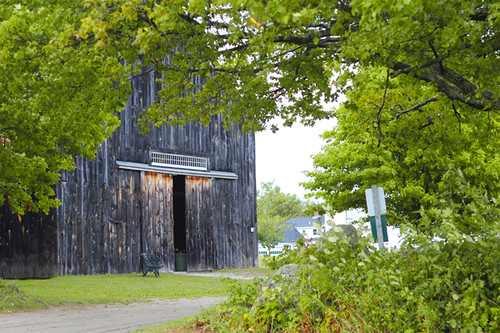
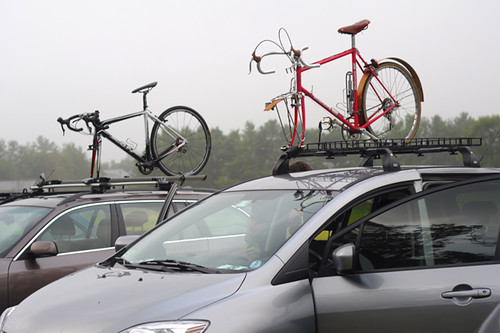
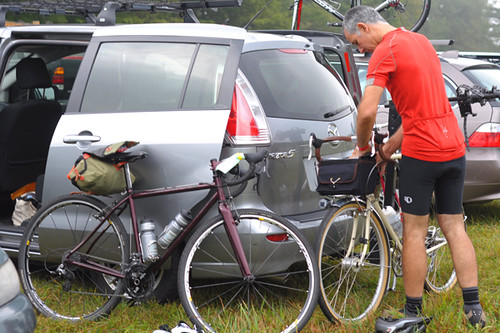
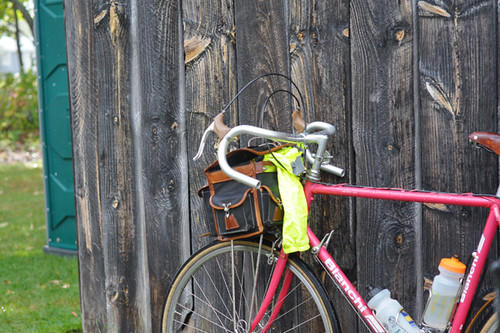
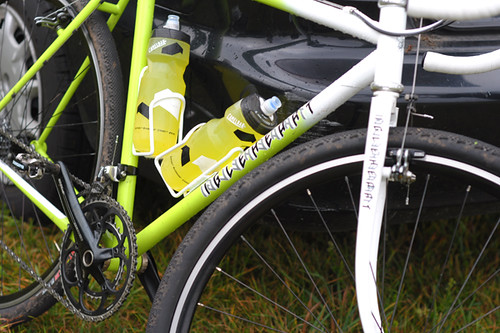


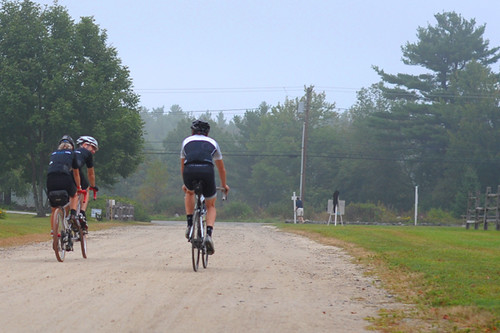
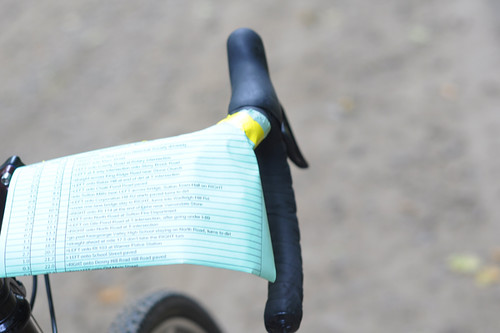
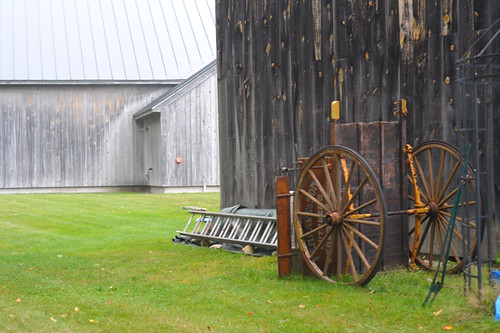
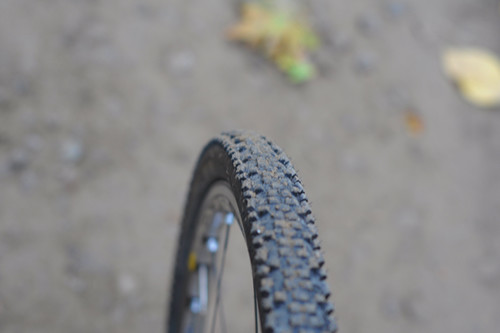

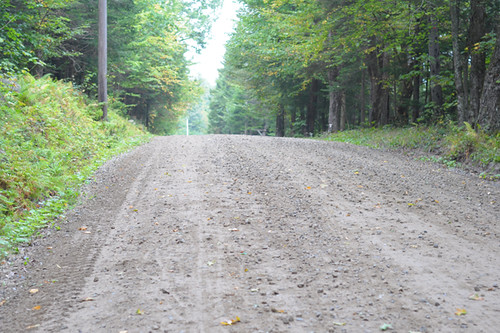
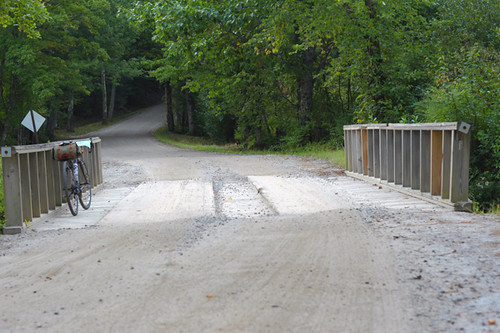
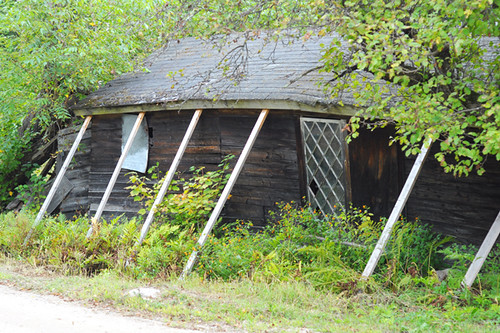
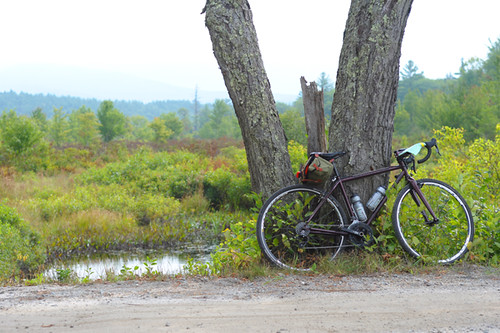
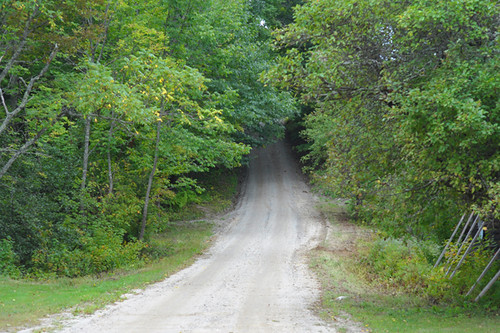
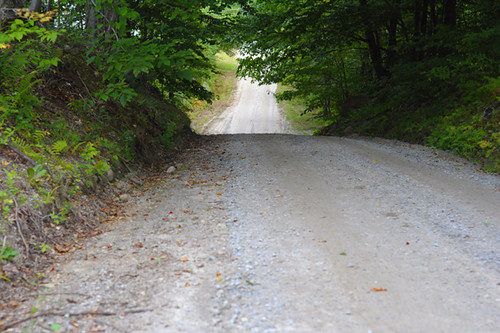
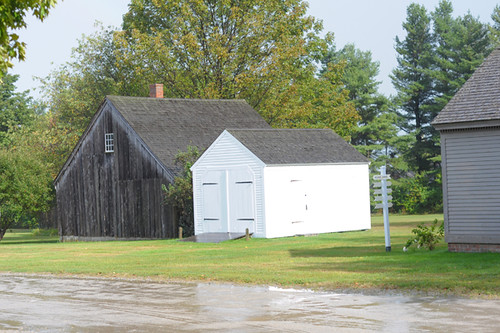

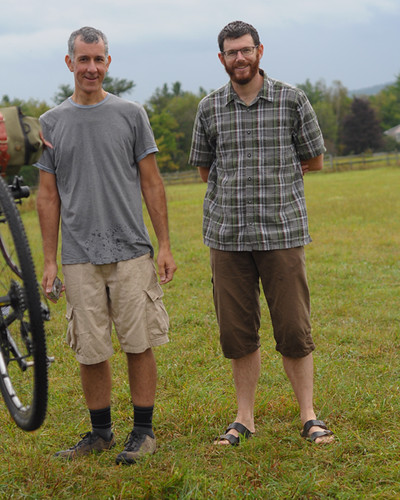
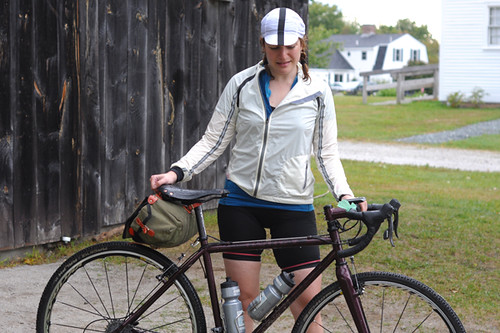
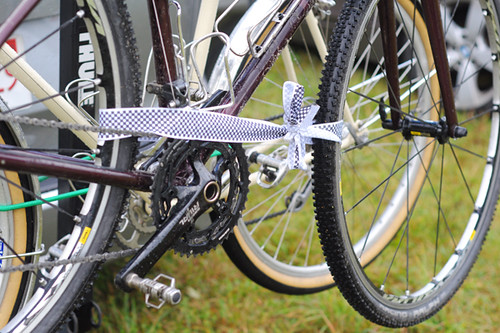
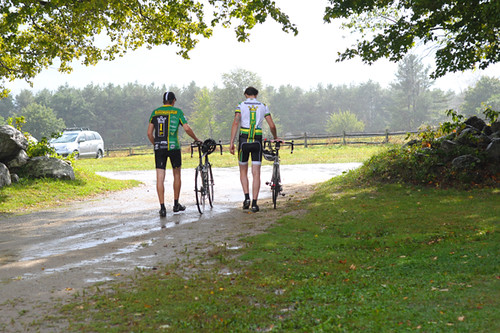
It was a great ride. I believe the D2R2 began from humble beginnings also and can see the Kearsarge developing into a larger event in the future. Glad to hear that you continued after the first rocky descent, the scenery was beautiful throughout.
ReplyDeleteThis was a delightful post. Not my style of riding at all, but it sure has me thinking I should try it! It is nice to know there are more pristine areas for riding "out east" .
ReplyDeleteRiding at any kind of speed over loose, large gravel and stone is a real challenge. Definitely catches ones attention.
ReplyDeleteThanks for the link on the Land Trust. Appears to be doing some good work. The Nature Conservancy and other smaller organizations are making some headway preserving marsh and river bottom land in Illinois. Most of the large farms in bikeable areas here are corporate owned and resist preservation efforts.
Nice report!
ReplyDeleteIs this terrain beyond what you can do with a Sam Hillborne? If so, how?
So nice to see beautiful interior New England a couple days in a row.
Not at all, this is pretty much Hillbornesque territory provided you fit it with appropriate tires.
DeleteI imagine you got more pleasure out of this ride with the Honey than you would have on your old SH.
DeleteThe SH is very stable and comfortable. On rides like this I personally prefer a lighter, more aggressive bike. The Honey was actually kind of challenging to handle until I got the hang of it. But once I did, it was great.
DeleteThe terrain looks very similar to my local area. After a bad fall descending over some loose gravel a few years ago, I vowed never again. You've got me wondering now though ... I have just given away my mountain bike but kind of hated it anyway. Tempted to give it a go on the Betty Foy!
DeleteAny time you use the term "spooky" to describe a stretch of road you make me want to sneak off and try it. This seemed like the freaking IDEAL of autumn dirt road rides...
ReplyDeleteSpindizzy
BTW, chili and cornbread, Mmmmmm....
Stock options, gasp!
ReplyDeleteGoodbye lugz, I'm gonna rail.
Let it flow, let yourself go.
Let's revisit your opinion about v-brakes now...
My first thought upon reading this -- besides well done! -- was you should change the name of your blog from 'lovely bicycle!' to 'lovely friends!' Seems like you've found a batch of them these last couple of years which make the experience of riding more about the adventure and companionship than merely lovely machines!
ReplyDeleteAnyway, seriously, well done for taking on another challenge and surviving. Sorta reminds me of when my sons started downhill skiing and they kept going with friends who were more accomplished and found themselves, after easily taking a lift up a mountain, staring down the scariest cliff imaginable and realizing it was up to them to make it down. They basically just let go, heart beating wildly, and did it again!
It's not surprising that the event was populated mostly by more hard core folks if this was the first year. Perhaps, after a couple more years, word will get out and a wider variety of folks will join in, but then again it is cyclocross season and school has begun so maybe it will remain a relative secret.
And now the question is what type of bike will next find it's way to your stable?? :)
nice report. i see a friend's vaya in there.
ReplyDeleteriding on dirt, for me, never gets old.
come on up for our fall classic:
http://fallclassic-vt.blogspot.com
-mike
When I read about the first descent, I wondered about your tire pressure. I see many cyclists ride their tires too hard on bumpy sections. Often, just letting out a few psi can greatly improve control (and comfort) on the bumpy stuff.
ReplyDeleteThat is possible and I considered it, but was afraid to deflate them too much and get a pinch flat. I had them inflated pretty close to the minimum recommended psi.
DeleteDid you carry a pump?
DeleteYes, but I'd rather not flat. It would take me a while to fix it (hand problems), and I would not want to burden others with it either.
DeleteSomething as wide as a Ralph should go on and off relatively easily. If not, then wider rims will make it so. Only Ralph I've mounted recently was MTB so I can't be certain, but I'd be surprised if taking one off and on needed any strength at all. Just be sure the bead is seated, tube inside.
DeleteRough gravel will cut tires. Carry a spare tire as well as a tube and patches. Carry patching canvas. Patching canvas takes as much room as an extra tube of glue and saves rides.
The Honey cantilevers have very long straddle cables. One glance tells these are modulators, not stoppers. Stopping will require hand strength. I will presume the bike owner wants it that way.
ReplyDeleteThe very same brake set up differently will stop a tandem. Cantilevers are simple versatile dependable and strong. The most usual problem with a canti is that fenders lights racks will get in the way and limit where the yoke and straddle can go. On the Honey this is not an issue at all.
Glad you survived once again. Between the brakes and the gravel your hands got a workout. Gravel descents are hard on anyone's hands.
The intractable problem with gravel braking is traction. It varies constantly. Planning ahead helps when you can. Sometimes you can't. I've met moose on those roads while coming out of a fast downhill sweeper. Moose always have the right of way. They are not concerned with your braking problems.
Very generally riding the gravel means you are always leaning and correcting your line even when going straight. Rear brake while leaning starts a turn in the direction of lean and can do so abruptly in soft stuff. Front brake has a smaller tendency to pull the bike upright.
A cyclo bike is the easiest way to go. If jumping logs and bouldering are not on the agenda a standard road bike with a low bottom bracket is easier to control. There will be plenty of times, esp. downhill, when the brakes won't do much and it's too fast to control the bike with the pedals. Then you dance. Which is easier when low. Same applies to the saddle. One centimeter lower than for paved roads will not make you slow and will aid control and comfort. (Standard road bike above does not mean a Madone or a P3. It means a PX-10 or maybe a 700 Nordavinden)
Can we please, PLEASE, reopen the thread about setting up cantilevers? PLEASE? I promise to be nice this time(until that know it all who always makes me look like a jerk pipes up cuz I finally thought of the most AWESOME retort), I have so much I wnna' share...
DeleteSpindizzy
I agree. It looks to me like the crossover cable hanger on the brakes is a little too high. This will give the brakes a "crisp" feel, but poor stopping power. A lower hanger will give a mushier but stronger brake. Or it could be bad pads. But those brake should be strong.
DeleteHandling on gravel has the annoying tendency of being much easier when you are not afraid (i.e. tense and stiff). It takes a while to get that you have to relax and let the bike wander a little. But it sounds like you naturally adjusted.
There is really no mystery to it. They all suck. Here is the physics sim:
Deletehttp://www.circleacycles.com/cantilevers/
When you have a particular problem with a particular bike get out the wrenches and try stuff. You don't need to solve universals. You don't need to arrive at a platonic ideal. You need to stop. You need to be safe.
DeleteCantilever brakes have stopped tandems on mountains at least since the 1930s. They work. The Tektro is a good brake. I own a set. They stop. That's all they have to do.
If the favored analytic methods are Oh Dear It Is All Ever So Complicated flanked by They All Suck you can't work on bikes. A bike that is a Mystery to it's rider is a problem waiting to happen. Get out the wrenches. Try stuff.
We just don't have that here, as far as I can tell. Goodness gracious, that's pretty
ReplyDeleteNice work, kudos for tackling the dirt and gravel with grace. Anon provides some great advice on technique above. I'd just add that maintaining contact with the saddle is vital on any sort of loose descent. When I go down stuff fast, I ride the drops, and my stomach touches the front of my saddle. This provides a great deal of stability, keeping the wheels in line.
ReplyDeleteMy group was riding a hilly century in Ontario on Saturday, one we do every year. I hope these won't conflict next year, as dirt road events are to us as water is to fish.
It looks beautiful, and how were the dirt roads? Thick with gravel, or dirt and clay flattened smooth for joyous riding? While I always love the sight of dirt roads and what they entail(sweet rural properties, wilderness etc), having been living up a very steep one for the past several years, the romance is gone a bit. When in rainy season, the clay gets packed smooth which is wonderful. In the summer it dries out and gets rough, loose and crumbly which becomes difficult to ride down. And the district thinks its a great idea to grade the road and cover it with piles of gravel every so often. It becomes unridable for awhile. My area is lined with dirt/gravel logging roads ascending high up mountains. Logging roads tend to be pretty tough, almost to deter cars and cyclists other than mountain bikers and downhillers.
ReplyDeleteI had assumed I would be one them all the time going 'wheeee!', but instead something terrible happens on the descents. I get the itchies which I can only guess is from vibration. In my hands, arms, my legs, and eventually all over. it is extremely painful! It gets to the point where I cannot brake, can barely hold the handlebars, so have to stop and writhe in agony and try scratch the itchies. When I still had my mountain bike with shocks and knobby tires it was unbearable. Even on flattish dirt trails I will get the itchies on certain bikes. Sometimes it's the tires or tire pressure. This did not happen when I used to ride any old bike on prairie roads, so I think the grade of road and gravel quotient make a difference. How do different tires handle dirt roads?
Does anyone know what I am talking about with itchies?
I know of a remarkable route on Vancouver Island that would be a dream to bike, but part of it is logging road grade roads and I would suffer too much.
Heather, I experience a very mild version of this, especially when going over washboards. I am sure it is from the vibration. It is possible that some bikes are more resistant to it than others, and it could also be a matter of how you hold yourself on the bike. When I feel the way you describe, I change my position and try to relax and it goes away. Of course, everyone is different.
DeleteAs for tires... On the kind of roads described here, I prefer the feel of Grand Bois Hetres to the Racing Ralph knobbies. The Hetres didn't bounce as much and felt more sure-footed, if that's the right word.
I get something similar just in my hands from prolonged use of angle-grinders or sanders, so I imagine you are right about it being caused by vibration.
DeleteHoly %$#@!!
ReplyDeleteYou have become a cyclist.
Brava.
The most important suggestion I can make is, be sure to set the coffee pot up the night before, so you can stagger out to the kitchen in semi-consciousness and just turn it on. Sounds to me like you have te rest of it pretty much figured out. :-)
Nah. I became a cyclist the first time I rode my wobbly 3-speed down the road in Boston, all alone and with drivers shouting at me to get off the road, but continuing nonetheless. That was epic. This stuff here? It is just a fun long ride, a hedonistic photo expedition. Let's not overvalue recreation.
Delete...though I should have started with "thank you for the Brava nonetheless" : ) Didn't mean to be so cranky.
DeleteThe coffee is French press and must be fresh for the day to start right. It's okay though, takes me 5 minutes to make it.
you became a cyclist the moment you got on that old mountain bike and spent your teenage years pedaling around.
DeleteRight, a cyclist isn't someone who completes a particular distance, rides at a certain pace, rides a particular bike, dresses in a bike costume...a cyclist is someone who rides a bike.
DeleteI think she had a direct drive tricycle before that. Been a cyclist for a while. Just didn't know it.
DeleteYou should come out west and experience some of the dirt/logging roads....Spectacular!!
ReplyDeleteV, I resonate much with your interest in gravel. I just started adoring it last year. I bought a Salsa Vaya and went nuts. Out here in Western Mass, we've got a fair amount of dirt road, though most of it goes UP. Here's an early love song to the experience:
ReplyDeletehttp://velophoria.blogspot.com/2011/06/to-texture.html
I suggest you test-ride a Salsa Vaya. A thoughtfully-priced and lovely bike, built specifically for long multi-surface or dirt-road rides. (Does pretty well on paved road, and I even occasionally try my hand on tame single-track). Available with triple chainrings, or a compact double with nice-sized rear gears; sounds like you'd be more than fine on any hill.
If you're looking for really intuitive dirt-road handling and super-comfortable all-day geometry with real style, you can't do better. 'Cross bikes feel too twitchy and aggressive for me.
If you're interested in riding dirt out here on the right bank of the Connecticut (across the river from Deerfield), give a shout.
I've been meaning to try a Salsa Vaya. The Wheelworks nearby sells them, but they never seem to have one in my size.
DeleteThanks for the link and the shout!
You're most welcome, I'm really enjoying your blog. We have significant crossover in bike and riding tastes -- always a fun thing.
DeleteIf you're ever out near Amherst, we have a certified Salsa dealer in Hampshire Bicycle Exchange. Chris, who runs the place, is a Vaya owner (sold me one of his own, in fact). Might make a good day trip to call and see if he has your size in stock -- and then take it or your bike for a ride in the gorgeous Pioneer Valley. Just sayin'... ;-)
Other cyclists were still en route and would do the same once they finished.
ReplyDeleteSeriously? There were cyclists behind us? :)
I meant from the 85 mile route : ) There were a few, as I understood it.
DeleteOh also - I am getting reports of cyclists not finishing. So some arrived ahead of us because they cut their routes short. Just saying : )
DeleteWhat a wonderful ride report! So enjoyed it. Thanks!
ReplyDeleteI think you are still being too hasty and inaccurate when you give your "impressions" of this bike after a short ride, proof being knocking out this hard one on the same.
ReplyDeleteYou're still not taking into acct. adaptation and tires, fwiw.
Just needed to be pointed out.
Sure. In the Honey write-up, I was basically sharing my first impressions of a cross bike, no more than that. And here I was describing the feel of the bike solely in the context of the ride report.
DeletePersonally I think a good understanding of a bike can only be achieved after several hundred miles of riding in different terrain and weather, different types of rides, etc. Of course the problem with this is that such long test rides are usually unrealistic. You basically have to buy the bike to test ride it in this manner. Or else get real lucky and live near a bike shop that is liberal with their demo models.
There are those who insist that a 2 mile ride outside of the bike shop should be enough to determine how any bike handles. Maybe for some that is true, but not for me.
That's mainly true of LBS owners selling spanking-new bikes. Can't blame them -- but I flatly disagree. I've owned my Quest for three months and hundreds of miles and I'm still dialing it in and making up my mind.
DeleteYour Honey write up said a bunch of hooey about how you weren't good enough to ride it. Total BS and that was only last week.
ReplyDeleteThe best thing your ride companions did was leave you alone to figure it out. Getting out of your own way is the biggest thing you can do to get more confident/better.
From the photos, what a wonderful ride. I wish you could have photo'd one of the steep, rocky downhills.
ReplyDeleteI want a good dirt road bike to supplement my stable; I'm not sure what the best option would be, but I'm thinking along these lines:
1. Fargo. This is easy, since I have one (from the last year before suspension). I have a massively heavy but (in its own way) fun wheelset for our local (bosque, Rio Grande silt) paths: SnoCat SLs, 44 mm, with 2.35 Big Apple Liteskins ("Lite" -- hah!) that rolls very nicely over sand up to 3" deep and gravel, swallows washboard with scorn, and even handles rip-rap. I also have a Sun Rhyno-Lite wheelset shod with 35 mm Kojaks. I expect for something like the Kearsarge, an in-between size would be best.
2. A nice cross bike: A Cross Check?
3. A nice retro road bike with 38's or with even fatter 650Bs. My brother just scored an early '60s Cinelli that I covet.
What do y'all think?
I think what you'll need for the KK is A Bike. I comment from the middle of the continent but for quite a few years my sister lived in Andover about 2 miles from the KK route. I've done all those roads in 42x24 with 700x23 tires. Which was not ideal but with beautiful roads beckoning and only one bike along for the trip it was fine. 39x26 and 700x28 was much better. These days I'd be sensible and use tires the size V did, but there's no use for the knobs if you stay on roads. The steepest toughest route in the neighborhood is going to the top of Kearsarge from Warner. You'll need good knees to do that in 42x24. All other climbs are short. Basically you need A Bike.
DeleteOooh, my favorite type of ride! So glad your photographic and writing talents are describing such cool rides. Between this and D2R2 it sounds like you are doing some magical rides, and color me jealous. I might need to plan my 2013 calendar around these rides. Maybe start one up here in frigid Maine!
ReplyDeleteSounds like a fun ride. If you really want to feel safe on decents get a mtb with hydralic disc brakes which are standard these days. They also feature low gearing for climbs and fat tires and suspension forks for control and comfort.
ReplyDeleteCross bikes are great to but for comfort, safety and climbing on bad roads and trails it is hard to beat a mtb.
While I'm not one to discourage owning a number of bikes (having 5 myself) I just can't imagine that the Sam Hillborne wouldn't be the perfect bike for this type of ride. For quasi-mountain biking, I could see the need for a higher bottom bracket, but for dirt road rambles, I don't know how you could improve.
ReplyDeleteI do not own the SH anymore.
DeleteLot of bikes can handle a ride like this. Anything the rider is comfortable with, equipped with wide tires and low gears basically.
oh...that explains it. thx.
DeleteMini V brake on the front wheel would fix the braking on that bike, imo.
ReplyDeleteWhere are these great roads for biking in NH? I grew up there, and whenever I visit (not very often), it seems so not bicycle friendly out there...
ReplyDeleteThe KK started in New London and meandered through Sutton, Warner, Webster, Andover and Wilmot. It's an amazingly beautiful area.
DeleteLooks like fun! Living in New Jersey, I am envious of all those dirt roads in New Hampshire and Vermont. There is a ride in NJ called the Hell of Hunterdon every spring, which is not too far away from me, but only 15% of the 79-mile distance is on non-paved surfaces.
ReplyDeleteLove this: "My attitude at this point can best be described as 'surrender.' And maybe because of that, I relaxed and suddenly the bike felt as if it was not only riding itself, but teaching me how to hold my body upon it so as not to interfere with it riding itself."
ReplyDeleteI live in the area and hadn't heard of this, otherwise I would have gone. I'd love to get a cue sheet to go try out the route myself. Any idea if it's posted online somewhere?
ReplyDelete